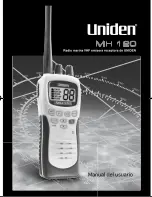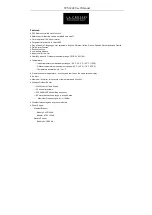
20
SAFETY AND GENERAL INFORMATION
IMPORTANT INFORMATION ON SAFE AND EFFICIENT
OPERATION. READ THIS INFORMATION BEFORE USING
YOUR INTEGRATED MULTI-SERVICE PORTABLE RADIO.
For the safe and efficient operation of your radio, observe these
guidelines.
Your radio contains a transmitter and a receiver. When it is ON, it
receives, and also transmits, radio frequency (RF) energy. The
radio operates in the frequency range of 806MHz to 866MHz,
and employs digital modulation techniques. When you use your
radio, the system handling your call controls the power level at
which your radio transmits. The power level may typically vary
over a range from 0.01 of a watt to 0.6 of a watt.
•
Exposure to Radio Frequency Energy
In August 1996 the Federal Communications Commission (FCC)
of the United States with its action in Report and Order FCC 96-
326 adopted an updated safety standard for human exposure to
radio frequency electromagnetic energy emitted by FCC regu-
lated transmitters. In addition, the International Commission on
Non-Ionizing Radiation Protection (ICNRP) has established
standards containing RF exposure guidelines. Motorola iDEN
products comply with these standards.
•
Efficient Radio Operation
The following practices will enable your radio to operate at the
lowest power level, consistent with satisfactory call quality.
When placing or receiving a phone call, or using the group or pri-
vate call functions with the Group/Private Speaker OFF (muted
speaker icon visible in the display), hold the radio as you would a
telephone. Speak directly into the mouthpiece and position the
antenna up and over your shoulder.
When using the radio as a traditional two-way
radio while making group or private calls with
the Group/Private Speaker ON (no speaker
icon visible in the display), hold the radio in a
vertical position with the microphone one to
two inches away from the lips.
DO NOT hold the antenna when the radio is “IN USE”. Hold-
ing the antenna affects call quality and may cause the radio to
operate at a higher power level than needed.
l3000E Getting Started Page 20 Monday, January 27, 1997 4:01 PM







































